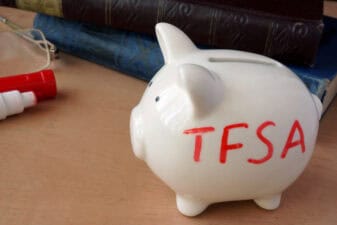The tax season is arriving soon. Here are three things you should know before you do your 2020 taxes. The Canada Revenue Agency (CRA) has introduced many cash benefits and tax breaks in the light of the pandemic. Lack of knowledge about these benefits could cost you a huge tax bill.
CRB and CERB
Starting with the cash benefits, last year the CRA gave $2,000/month in Canada Emergency Response Benefit (CERB) and Canada Recovery Benefit (CRB). You have to add these benefits to your 2020 taxable income. If you have maxed out on your benefits, you will have to add $19,400 ($14,000 in CERB and $5,400 in CRB) to your taxable income. The tax levied will depend on your overall income and your province.
If your 2020 taxable income after excluding CRB is above $38,000, the CRA will clawback 50% of your surplus income up to the CRB amount you collected.
For instance, Mary is an Ontario resident who earned $40,000 in 2020 after adding CRA benefits. This income includes $5,400 in CRB payments. Hence, the CRA won’t claw back her CRB. However, she will incur a tax bill of $8,200. Here, she can reduce this amount by claiming $2,528.5 ($1,984 in federal and $544.5 in provincial) in the basic personal amount tax credit. She can reduce her tax bill further.
The CRA’s home office expense deduction
The CRA has introduced a temporary deduction only for 2020 as many Canadians were working for home. Did you work from home full-time or part-time for more than 50% of your working hours for at least four consecutive weeks? Then you can deduct $2/day for the number of working days after excluding vacation, leaves, and sick days. You can deduct a maximum of $400 for 200 working days in home office expenses. Note that you can’t deduct the expense for which your employer reimbursed the money.
Taking my previous example, Mary can deduct $400, reducing her taxable income to $39,600.
RRSP contribution
Mary can reduce her tax bill further by contributing up to 18% of her earnings ($7,200) in the Registered Retirement Savings Plan (RRSP). The CRA allows you to deduct the RRSP contributions you make between March 2, 2020, and March 1, 2021, from your taxable income. But there is a catch. If you withdraw from the RRSP, the CRA will deduct withholding tax between 10% and 30%, depending on the amount you withdraw.
If Mary contributes $2,000 to the RRSP, her taxable income will further reduce to $37,600. The above deductions will reduce her tax bill from $8,200 to $5,180.
Make the most of your RRSP
If you are thinking of contributing to the RRSP, look for long-term investments that can continue to grow in 10-20 years. It is difficult to make such long-term predictions. Hence, invest in futuristic trends that are still at a nascent stage.
The future of energy is green and clean energy. Oil has ruled the energy sector for a century, but now the times are changing. One of the world’s largest oil company BP, in its energy outlook 2020, stated that oil demand has peaked. The next 30 years will see oil demand decline and renewable energy replace oil in various sectors like passenger cars and trucks and energy generation.
BP and other big energy companies are taking this shift seriously and investing in wind and solar energy. Northland Power (TSX:NPI), an independent producer of green power projects in Canada and Europe, will benefit from the shift. The company produces 2.6GW of electricity from wind, solar, gas, and biomass.
Northland Power has other 1.47GW projects under construction. With every new project, its power generation capacity increases, and it sells this power through a power purchase agreement. The company will benefit as investors are gradually moving towards ESG (Environmental, Social, Governance) compliant companies. Moreover, renewable energy projects are quick to develop and cheaper to build and produce energy.
As the move to renewable energy accelerates. Northland Power stock surged 75% since its March 2020 low. It has the potential to grow and increase its dividends in the long term.







